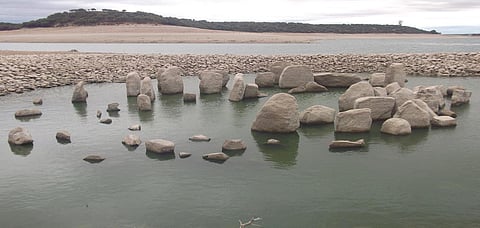
- Destinations
- Experiences
- Stay
- What's new
- Celebrating People
- Responsible Tourism
- CampaignsCampaigns
- SubscribeSubscribe
- Buy Now

Europe had a rather unusually hot summer in 2019. In Spain, at least seven weather stations recorded their highest ever June temperatures, and the country also had higher than average drought last year. The stifling European summer dried out the water so much that it revealed a historic treasure of sorts. In the province of Cáceres, the shoreline of the Tagus River receded due to drought, exposing to view 100 circular stone monuments, much like Stonehenge.
These were later found to be the more than 4,000 years old dolmens of Guadalperal, which had been underwater for almost 60 years.
These megalithic monuments are up to 1.8m tall and arranged in a 26m-diameter circle. Experts think it was probably used as a temple, a burial site and even as a trading spot due to its strategic original location on the banks of the river. And quite possibly, it was ransacked by the Romans.
An excavation to the site had taken place in the 1920s,and some items had been studied and exhibited in Berlin. In the 1960s, the area was flooded by the construction of the Valdecañas Reservoir and these stones were submerged. Sometimes in the summer, as water levels went down, the tops of the tallest stones would appear. When the water is really low, more gets exposed. It was the intense heat of 2019 and the drought that they became fully visible since the reservoir was created. Apparently a NASA satellite spotted the stones when they were revealed. .
However, the state of the dolmen is quite fragile. The water has made the stones porous. Most are eroding or are cracked. Locals are asking the government to move the rocks to a better place to be preserved and studied. However, authorities say moving these treaures may damage them.
With the return of rain last autumn, the Valdecañas water levels went back to normal and, despite all efforts, the treasure of Guadalperal is back underwater for now.
Likely used as both a temple and cemetery, the monument once featured menhirs, or tall upright stones, topped by horizontal slabs of stone to form an enclosed dolmen, which is a single-chambered tomb. An engraved menhir stood guard at the structure&rsquos entrance, while a pebble wall later built around the dolmen cemented its status as a collective burial site.
The trip to the dolmen are is quite tough. Visitors have to walk for hours in the full heat of the sun.
